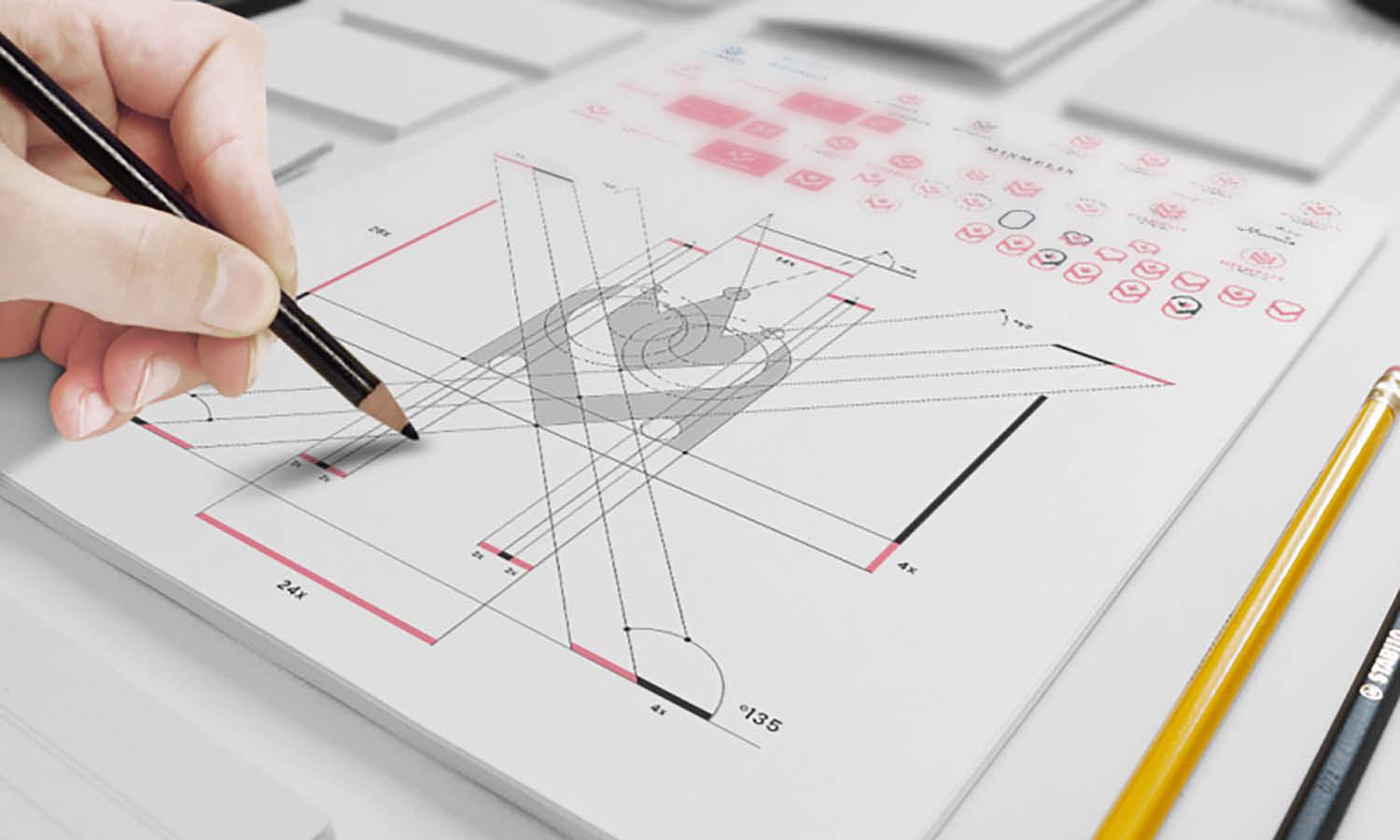How to Summarize Information for Presentation Design

In today's fast-paced world, the ability to effectively summarize information for presentation design is invaluable. Whether you're preparing a business proposal, an academic lecture, or a workshop, the clarity and impact of your presentation can significantly influence your audience's understanding and engagement. The challenge lies in distilling complex information into digestible, compelling segments that capture the essence of your message without losing critical details.
This skill is particularly crucial in fields where decisions are data-driven and time-sensitive. By mastering the art of summarization, you can ensure that your presentations are not only informative but also persuasive and memorable. The key is to focus on core messages, use design elements strategically, and adapt the content to the audience's needs. With the right approach, your presentation can become a powerful tool for communication, facilitating clearer understanding and more effective decision-making.
As we delve deeper into the nuances of presentation design, this article will guide you through practical techniques and insights to enhance your ability to summarize and present information succinctly and successfully.
Identify Key Points
In the realm of presentation design, identifying key points is a critical step that ensures your message is clear and impactful. This process involves a deep understanding of the material and discerning which elements are essential for your audience's comprehension and engagement. Begin by reviewing your information thoroughly to determine the core themes and ideas that align with the goals of your presentation.
Once you have a grasp of the material, distill it into a set of primary points that you want your audience to remember. These should be the pillars of your presentation, around which all other information is structured. Keep in mind that the attention span of your audience is limited; thus, it is crucial to focus on delivering the most valuable insights in a concise manner.
To effectively identify these points, consider the relevance, importance, and potential impact of each piece of information. Ask yourself, "Will this detail aid in achieving the presentation’s objectives?" and "Is this information necessary for the audience to understand the main message?" By filtering your content through these questions, you ensure that only the most pertinent details are highlighted, making your presentation not only streamlined but also more powerful.
Use Simple Language
The effectiveness of a presentation largely hinges on the clarity of its content. Using simple language in presentation design is not about dumbing down information; rather, it’s about making it accessible and easy to understand for your audience. This approach ensures that your key points are communicated clearly and can be easily grasped by everyone, regardless of their background or expertise level.
To implement this, choose words that are straightforward and avoid jargon that might confuse the audience. If technical terms are necessary, make sure to define them clearly when they first appear. This practice helps in maintaining the flow of your presentation and reduces the cognitive load on your audience, making it easier for them to stay engaged and absorb the information.
Additionally, structure your sentences in a clear and logical manner. Use active voice as much as possible, as it tends to be more direct and vigorous than passive voice. This makes your statements more compelling and easier to follow. Also, keep your sentences short and to the point; this will aid in maintaining the attention of your audience and reduce the chance of misunderstanding.
Remember, the goal of using simple language is to convey your message effectively, ensuring that your audience leaves with a clear understanding of the subject. This practice not only enhances the delivery of your presentation but also bolsters its overall impact, making your key points memorable and actionable.
Incorporate Visuals
In the sphere of presentation design, the strategic use of visuals can dramatically enhance the delivery and reception of your information. Visual elements such as charts, graphs, images, and diagrams not only make your presentation more engaging but also aid in the comprehension and retention of information. When integrating visuals, it’s crucial to ensure that they directly support and clarify the key points of your presentation.
Start by selecting visuals that are directly relevant to the content being discussed. Each visual should serve a purpose, whether it’s to illustrate a point, show relationships between data, or evoke an emotional response that reinforces your message. For instance, use a graph to depict trends over time or a diagram to show complex processes in a simplified form.
It's also important to maintain a balance in your presentation. Overloading slides with visuals can be just as detrimental as using too few. Each slide should have enough white space to prevent the audience from feeling overwhelmed. Furthermore, ensure that your visuals are of high quality and professionally designed, as poor-quality images can detract from the credibility of your presentation.

Source: Md Abadul Biswas, Pitch Deck Presentation - Finsa, Behance, https://www.behance.net/gallery/211652237/Pitch-Deck-Presentation-Finsa?
Organize Information Logically
The organization of information in presentation design is vital for effectively conveying your message to the audience. A logical structure not only guides the audience through your content in a coherent manner but also helps reinforce the relationships between different pieces of information. When planning your presentation, consider the natural flow of the topic at hand and organize your slides or segments accordingly.
Begin by outlining the main points you wish to cover, arranging them in a sequence that builds logically from one concept to the next. This might mean placing an introduction at the beginning to set the stage, followed by a progression of ideas that lead naturally into one another, and concluding with a summary that reinforces the most important takeaways.
Within each section of your presentation, maintain a clear and consistent structure. Use introductory slides to forecast what will be discussed and conclusion slides to summarize key points. This not only keeps the audience oriented but also reinforces their learning as the presentation progresses.
Consider the use of signposts—transitional phrases and slides that indicate a shift from one section to another. These help maintain audience engagement and clarify the structure of your presentation. For example, transitional slides might pose a question to ponder or preview the next section, providing a mental 'breather' and maintaining interest.
Effective organization requires thoughtful consideration of content and audience expectations. By arranging your information logically, you enhance its accessibility and impact, ensuring that your presentation not only delivers valuable information but also facilitates a smooth and engaging experience for the audience.
Limit Bullet Points
In the context of presentation design, limiting the use of bullet points is essential to maintaining audience engagement and ensuring the clarity of your message. While bullet points are a popular tool for summarizing information, overuse can lead to monotony and disengagement. Instead, focus on integrating bullet points with other elements like visuals, narratives, and data charts to create a more dynamic and effective presentation.
When you do use bullet points, make them count. Each point should be concise and impactful, ideally no longer than one line. This practice forces you to distill your thoughts to their essence, which aids in clearer communication. Additionally, limit the number of bullet points per slide—three to four is generally sufficient to convey key information without overwhelming the audience.
Also, consider the alternative methods of displaying information that can sometimes replace bullet points, such as diagrams, infographics, or short videos. These formats can often convey complex information more effectively than text alone and can help keep your audience engaged throughout the presentation.
The strategic use of bullet points can effectively highlight crucial information and serve as cues for discussion or deeper analysis. By judiciously incorporating bullet points, you ensure that your presentation is not only informative but also visually appealing and engaging, making your key messages stand out more effectively.
Prioritize Clarity Over Completeness
In presentation design, clarity should always be prioritized over the completeness of information. The goal of a presentation is not to cover every aspect of a topic but to convey key messages clearly and persuasively. Overloading your audience with too much information can lead to confusion and disinterest, which undermines the effectiveness of your communication.
To achieve clarity, focus on the essential points that support your presentation’s objectives. It is more effective to delve deeply into a few important topics than to skim over a broad array of subjects. This approach allows the audience to grasp and retain the information more effectively.
Simplifying your content does not mean omitting critical information but rather presenting it in a way that is easy to understand and remember. Use clear, concise language and avoid jargon unless it is commonly understood by your audience. When complex information is necessary, break it down into manageable parts and use examples or analogies to make it more relatable.
Additionally, the design of your presentation should support the clarity of your message. Use a clean layout, consistent fonts, and a color scheme that enhances readability. Visual aids should be used to illustrate points clearly and not merely as decoration.
Employ Analogies and Examples
Incorporating analogies and examples into presentation design can significantly enhance understanding and retention of the presented information. Analogies are particularly effective because they connect new information to familiar concepts, making complex ideas more accessible. When used appropriately, they can clarify intricate details and help the audience draw parallels to their own experiences.
Examples, on the other hand, provide concrete instances that illustrate your points, bringing abstract data to life. By demonstrating how theories apply in real-world situations, examples can make your content more relatable and engaging. For instance, if discussing a marketing strategy, citing a case study where the strategy was successfully implemented can help the audience visualize its effectiveness.
To use analogies and examples effectively, ensure they are directly relevant to the subject matter and clearly support your key points. Choose analogies that are universally understood and avoid those that could be misinterpreted or are culturally specific in ways that might not resonate with all audience members. Similarly, select examples that are recent and relevant to the audience’s interests or professional field.
Integrating these elements into your presentation requires a balance—use them to enhance understanding but avoid overloading your slides with too many details. Ideally, each major point in your presentation should be reinforced with at least one analogy or example to ensure clarity and facilitate a deeper connection with the audience.

Source: Md Abadul Biswas, Pitch Deck Presentation - Finsa, Behance, https://www.behance.net/gallery/211652237/Pitch-Deck-Presentation-Finsa?
Use Data Effectively
Using data effectively is crucial in presentation design to support arguments and convey your message persuasively. Data, when presented clearly and compellingly, can significantly enhance the credibility of your information. However, the key lies in selecting and presenting data in a way that is accessible and engaging to the audience.
First, choose data that is relevant and directly supports your key points. Avoid overwhelming your audience with excessive numbers and statistics. Instead, focus on data that illustrates trends, comparisons, or significant insights relevant to your discussion. Use graphs, charts, and infographics to present these data points visually, as visual representations can make complex information easier to understand and remember.
Ensure that your visuals are not cluttered; each should convey a single clear message. For example, use a bar chart to show comparisons between different groups, a line graph to display changes over time, or a pie chart to illustrate proportions. Always label your charts clearly, use legible text sizes, and explain what the audience is looking at and why it matters.
Additionally, contextualize your data within the broader narrative of your presentation. Explain the implications of the data and how it relates to the points you are making. This approach not only helps to maintain audience engagement but also reinforces how the data supports your overall message.
Consider Cultural Context
Understanding and incorporating cultural context is essential in presentation design, particularly in our increasingly globalized environment. Being culturally aware can significantly enhance the receptivity and effectiveness of your message, as it respects and acknowledges the diverse backgrounds of your audience.
When preparing a presentation, research the cultural norms and values of your audience. This might involve considering language choices, color meanings, gestures, and even the formatting of data and numbers. For example, colors that are considered auspicious in one culture might have negative connotations in another. Similarly, humor and colloquialisms can vary widely in their reception and should be used cautiously.
Additionally, it is important to use inclusive language and examples that do not alienate any part of your audience. Avoid cultural stereotypes and ensure that any cultural references are accurate and relevant. This not only prevents potential misunderstandings or offenses but also builds trust and credibility with your audience.
Keep It Brief and Engaging
Keeping your presentation brief and engaging is crucial to capture and maintain the attention of your audience. In the world of information overload, the ability to convey your message succinctly and compellingly can set your presentation apart.
By defining the core message you want to communicate and structure your presentation to focus solely on that message. Eliminate any extraneous information that does not directly support or enhance your main points. This will help keep your presentation focused and prevent the audience from being overwhelmed by too much information.
Use a narrative structure that tells a story, which can be more engaging than a mere listing of facts. Stories are easier to remember and can make complex information more relatable. Keep your language simple and direct, and structure your presentation in a logical sequence that guides the audience through your content smoothly.
Visual aids should be used strategically to reinforce your spoken words, not replace them. Avoid cluttering your slides with text—instead, use impactful images and key phrases that highlight your main points. Remember, the goal is to support your narrative, not to provide a script.
Lastly, engage with your audience. Ask questions, invite feedback, and encourage interaction. This not only keeps the audience involved but also helps you gauge their understanding and interest in real-time, allowing you to adjust your presentation dynamically.
Conclusion
Mastering the art of summarizing information for presentation design is essential for delivering compelling and impactful messages. By understanding and implementing key strategies such as employing visuals, organizing information logically, and keeping content brief yet engaging, you can enhance the clarity and effectiveness of your presentations. Always consider the cultural context and strive to make your presentations accessible and resonant with your audience. Whether you are presenting to inform, persuade, or inspire, these principles will help you communicate more effectively, ensuring your presentations not only capture attention but also leave a lasting impression.
Let Us Know What You Think!
Every information you read here are written and curated by Kreafolk's team, carefully pieced together with our creative community in mind. Did you enjoy our contents? Leave a comment below and share your thoughts. Cheers to more creative articles and inspirations!
















Leave a Comment